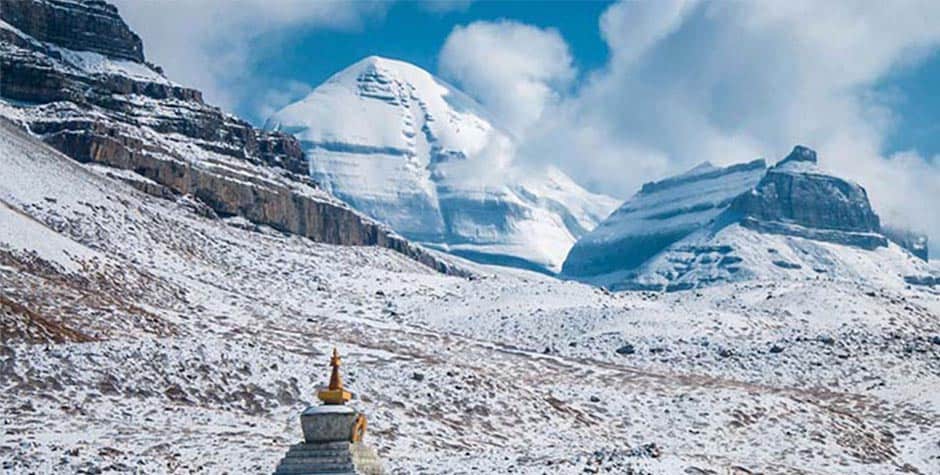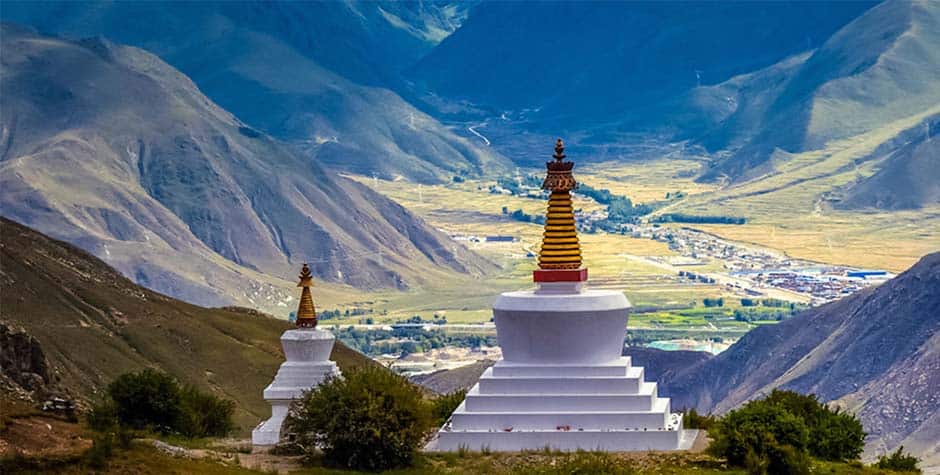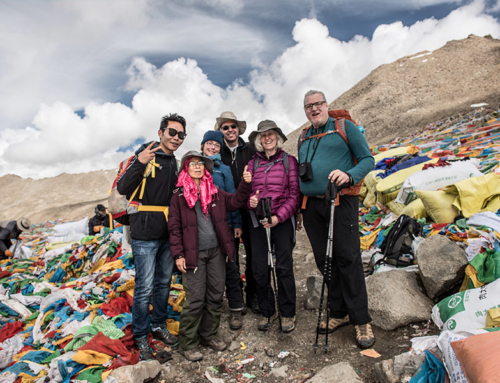Khata is one of the essential pieces of cloth in Tibetan culture. The term Khata is an informal and formal term for the traditional Tibetan scarf is call Jel-Dhar. When you travel to Tibet, Your Tibetan Guide will offer Khata on your arrival. We think it would be important for us to write about this culture.
The most common colour of the Khata is white to signify the purity of the intention of the offerer, with no negative thoughts or motives behind it. There are other colours use in Khata like Blue, red, green and Yellow. It looks like a long scarf, and it has auspicious signs and Mantras inscribed on it.
It is an essential part of our life and would use for all the occasion from birth to marriage and even death. It is a sign of love and respect for others. The offering of Khata is one of the most well-known customs in Tibetan culture. When you arrive in Tibet for your Tibet travel, you will be offered the Khata on arrival or departure from Lhasa or Tibet.
The size and fabric quality of Khata can be different for the choice of presenter. The most elegant one is made of pure silks, and the most simple one is made of simple cotton. It is not a matter of the quality of the cloth, but then it is the matter of sincerity of the offerer.
History of Khata
There are many different schools of thought about the origin of the Khata. The most popular one is from the Han Dynasty. During the Han dynasty, they send a diplomatic mission to the western region. The diplomats pass through Tibet and present silk roll to the leader of the local chief. Those times silks were ceremonial offering, and it symbolizes pure friendship. This etiquette of showing friendliness and wishes was the practice in the local tribe. Later the new custom is passed to the central plans and Yarlung river valley.
Another school believes the custom of Khata is Tibetans own development. During the time of the early Tibetan Tubo dynasty especially during the time of King Songtsen Gampo, King would present honouring the gift of the skin of a prized Animal to anyone for a good job. But after the arrival of Buddhism in Tibet in the 8th century. The Sages like Guru Rinpoche and Shantarakshita discourage giving animal skins, as it required the killing of animals for their skin. In India, there is a tradition of giving offerings of sets of new cloth to the master. The tradition of presenting animal skin is replaced with expensive silk brocade from China under the influence of Indian culture or master. Then it gradually changes into the current Khata culture.
According to the third school of thought. This culture prevalent in the pre-Buddhist nomadic communities of Tibet. They said the culture of Khata came from Kanak culture. In the Kanak Culture, we would put a pinch of tsampa on the shoulder of the guest that visit for work or visit to signify the host sincerely of their wishes of Welcome, respect, and farewell. Tsampa is put on the right shoulder for the men and left on the women. They also put the beautiful display of symbols and greeting on the floor to welcome high lama and officials. This tradition gradually became the Khata culture,
How to offer Khata
Offering Khata though is a very simple gesture, but in our tradition, it has its own significance and protocol governing this tradition.
Here are some protocols/etiquette in offering Khata
- Khata must be clean and wrinkle free which is why we used the new one on all the occasions nowadays. But in old time we will take extra care to make sure it is clean and wrinkle-free.
- Khata must be properly folded. When folding, it must be first fold in half width-wise. It represents the interdependence of our existence. After this fold, we will fold the Khata in fan effect and roll up to end the folding. When presenting the Khata, we must open it infant of the receiver. While holding khata to offer, you must hold it with your open palm. The open edge should face the person you are giving, and the folded end should be towards you. This represents your pure open heart, with no negative thoughts or motives in the offering.
- Bow before the receiver.
- If the receiver is higher than you, offer it on their hand, and if the receiver is of your equal or lower level, you can place khata around their neck.
Purpose of offering Khata
Respect/ Gratitude.
For high lamas, teacher dignitaries, and elders. When you give them Khata, it should be presented with folded hands placed near your forehead, and you should bow before them in humility. You will never put khata over the neck of someone higher and older than you. If the receiver is the elder and more senior than you, you will most likely get the khata back from them as a blessing. Special from the high lama, the returned khata is considered a blessing and will always be kept with them. We also have the custom of placing khatas over statues, Thangka paintings, portraits of reincarnated Masters, and over the altar. These are to show our devotion and aspiration for them. We also put the Khata on the prayer flags before hanging them. It is a sign of pthe purity and sincerity of our prayer, and it is also an offering to the gods for the swift accomplishmentof prayers and wishes.
We also use Khata when we visit someone’s home after the death of a near one. Khata is laid over the body; it represents our prayers for the deceased’s swift rebirth and freedom from suffering in the after-death stages.
Affections and celebration.
Khata can also be used for special events like birthdays, New Year, farewell, marriage, welcome, honour celebration, and any other day-to-d any other day-to-day event in one’s life journey. During these occasions, we will offer khatas.
I’d like you to please read more about Tibet Travel Information and Tibet Tours. Please visit our blog: Nomadictibet.com

Tenzin Travel is the best Tibetan Travel agency in Tibet. Our agency is one of Tibet’s most experienced tour operators, with over 20 years in the industry. Founded by a local Tibetan family with decades of expertise as guides, managers, and route planners. We craft personalized itineraries for every traveler. Our agency is the highest-rated and most recommended Tibet travel agency on TripAdvisor, Google, and Lonely Planet.
We can make holistic arrangements for your trip to Tibet. Including a Tibet Travel Permit, a Tibetan tour guide, flight tickets, train tickets, vehicle arrangements, and hotel bookings in Tibet.
Our Lhasa office is just steps from Barkhor Square. All our Tibetan team ensures deep cultural, linguistic, and religious insights, setting us apart from other agencies.
Beyond tourism, we support Tibetan communities by donating a portion of each tour to local projects. Your travel to Tibet is about more than profit—it’s about the opportunity for us to give back.


















